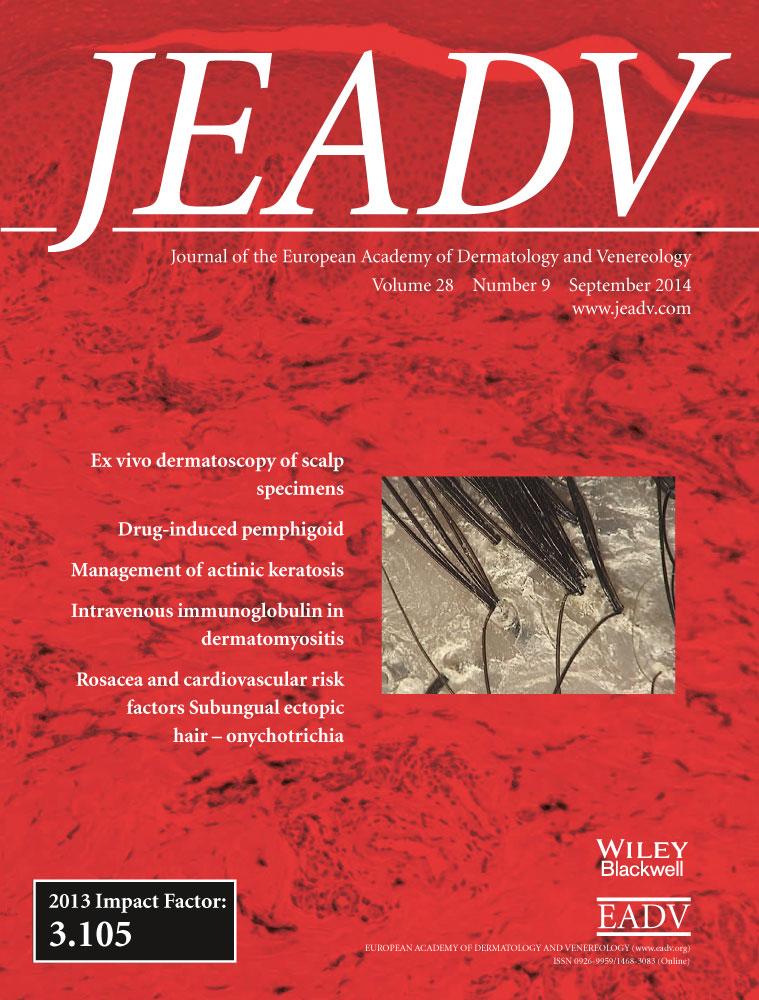Measurement of tanning dependence
Conflicts of interest
None declared.Funding sources
This study was supported in part by R03CA1504202 (CH), T32CA009035 (SD), and P30CA006927 (Cancer Center Grant).Abstract
Background
Indoor tanning has been found to be addictive. However, the most commonly used tanning dependence measures have not been well validated.
Objective
The study's purpose was to explore the psychometric characteristics of and compare the modified Cut-down, Annoyed, Guilty, Eye-opener Scale (mCAGE), modified Diagnostic and Statistical Manual of Mental Disorders – Fourth Edition – Text Revised (mDSM-IV-TR) and Tanning Pathology Scale (TAPS) measures of tanning dependence and provide recommendations for research and practice.
Methods
This study was a cross-sectional online survey with 18- to 25-year-old female university students. The main outcome variable was tanning dependence measured by the mCAGE, mDSM-IV-TR and TAPS.
Results
Internal consistency of the TAPS subscales was good but was poor for the mCAGE and mDSM-IV-TR, except when their items were combined. Agreement between the mCAGE and mDSM-IV-TR was fair. Factor analysis of the TAPS confirmed the current four-factor structure. All of the tanning dependence scales were significantly correlated with one another. Likewise, most of the tanning dependence scales were significantly correlated with other measures of tanning attitudes and behaviours. However, the tolerance to tanning TAPS subscale was not significantly correlated with any measure of tanning attitudes or behaviours and had the lowest subscale internal reliability and eigenvalues.
Conclusion
Based on the data and existing literature, we make recommendations for the continued use of tanning dependence measures. Intervention may be needed for the approximately 5% of college women who tend to be classified as tanning dependent across measures. Monitoring of individuals reporting tanning dependence symptoms is warranted.




